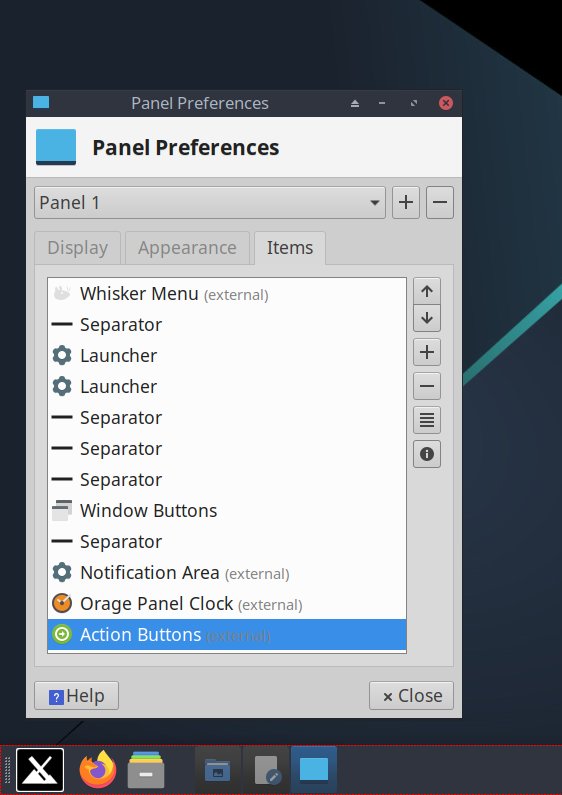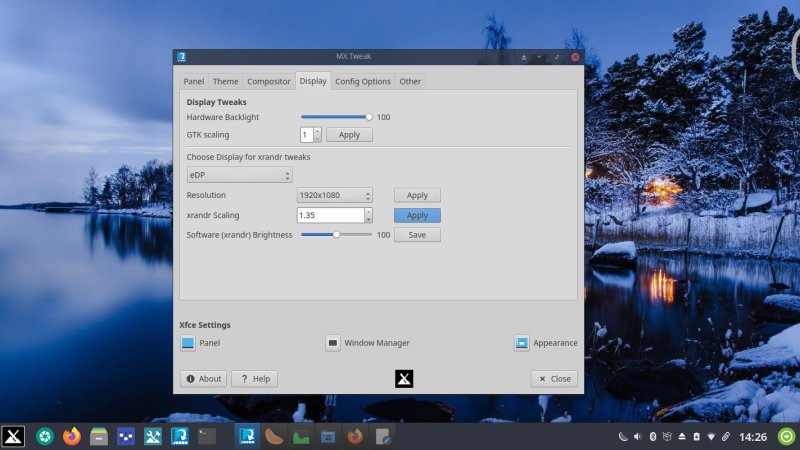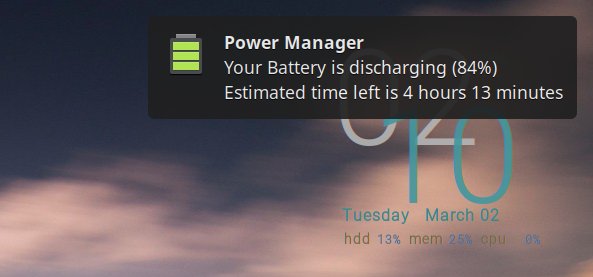MX Linux MX-19.3 patito feo (original) (raw)
MX Linux MX-19.3 patito feo - A year later, things be spiffier
Updated: April 9, 2021
More distro testing. And hopefully, today's experience shall be pleasant. To that end, I'm sort of going with a safe bet - MX Linux. Over the years, this small distro has grown and grown, but also matured, becoming a reasonable choice for serious desktoping. Well, for me, MX-18 was the best release, and I wasn't too keen on the latest yesteryear offering, version 19, as it was.
A year has passed, and MX Linux has had three dot revisions, which should be sufficient time to spit and polish any early bugs and bring back the old robust glory of the '17 and '18 crop. I will test the distro on me new scapegoat box, a triple-boot IdeaPad with an AMD processor and Vega graphics. Ought to be interesting. Follow me.

Installation
Almost didn't happen. I first downloaded the standard ISO, not thinking much about the hardware side of things. Then, when I booted the image, the distro quickly dropped into the command line, no desktop. I did try to run the CLI installer, but then it complained about the storage, and it could not detect and use the NVMe. Oh-oh.
Then I realized that there's a special edition of MX Linux, with Advanced Hardware Support (AHS), and that I needed a different ISO. This time, things worked fine. The boot was a bit messy, text in multiple resolutions and whatnot, but I was soon logged into the live session, with the unique MX Linux down-left menu-panel arrangement inside a fairly tidy Xfce setup.


The installation worked fine. It took about 4-5 minutes, which isn't a lot, but it doesn't sound super-impressive given the fact I've already seen AntiX and MX do similar times on old machines with mechanical disks. Indeed, the installer uses a single core only throughout. Furthermore, there are no partition labels, and the boot/efi selection is confusing. It's separate from the partition selection, and the installer didn't correctly mark the right device. It selected the external USB drive partition as the target rather than the internal one, on the local disk. That said, MX Linux allows you to preserve the live session data, which is always a great thing, and not something you see around often, if at all.

Why choose the live media as the target? Would that even work?

Getting started
Once again, the boot sequence wasn't pretty - text and splash animation mixed, and then you get into the desktop that has the brightness fully turned down. Not sure why, but it happens every single time. The boot takes about 10 seconds, which isn't bad for an init-based system, and rather similar to a bunch of other distros all using systemd. But then, a decade ago, I had lightweight distros boot in about the same amount of time on regular HDD, so while things are snappy, we aren't trailblazing a revolution here. Linux-wise, that is.
MX Linux preserved my Wireless configuration. The desktop looks reasonable - maybe a bit dark. There's more consistency and polish than before, especially when it comes to icons, system area, the little things like that. However, this is also part of the overall laptop screen quality problem - it doesn't have the best clarity and color depth - we've seen this in pretty much every system I've tested on this machine. Furthermore, the desktop feels tiny rendered on 1080p across 14 inches of screen.
HD scaling
And so, my first task of the day was to make the display comfortable. Easier said than done, because in the Linux world, Plasma is the only desktop environment that does scaling well - and really well. Xfce lets you use scaling, but only in whole-integer multiples, which doesn't really help. So I thought, maybe font DPI? Indeed, I upped the default DPI from 96 to 120, and this helped a great deal. The clarity is quite reasonable, and there don't seem to be any glaring visual artifacts. However, the window borders don't change, i.e. thicken up, so it can be a bit hard hitting the right window button. You can fix this by using the HiDPI decorations, but they come with bad color contrast.

The scaling works with whole integers - useless.

Why is 120 truncated? A little visual papercut, ja.

With DPI set to 120, you get reasonable clarity.
Then I thought ... wait a minute, why not use the MX Tools? After all, this distro comes with one of the friendliest toolboxes around, and you can use it to customize the desktop layout, change the Conky theme (or remove it altogether), move the panel around and such? Indeed, by the time I remembered to use MX Tools and MX Tweak, I've already done a whole bunch of changes that I could have fixed with a single click. But it doesn't matter.

A really useful Jack o' All Trades toolbox.

I also found a whole display sub-section - and here you can use xrandr to change your display scaling. Unlike what I did with EndeavourOS, here the higher numbers indicate things getting bigger, not the other way around. But the problem is identical to the issue I faced with the other distro. It's like blowing up JPEG images when you start seeing fuzziness and such. You can set the "scale" to 125%, but you will also lose the focus and sharpness. Unusable really. So I went back to using the DPI change, which is more effective and gives much cleaner results, but still a far cry from how Plasma does it.

Brightness change = skewed color spectrum. This is just gamma shift really. You can't see in the screenshots.

You might not be able to see it - the screenshot above came in at 35% less pixels than what I normally get, which would be 1920x1080px - this one was 1423x800px - the result of the xrandr scaling. So you definitely get a "smaller" screen blown up, which explains the fuzziness. Also, notice the Conky is all truncated and gone as a result.
Customization
Not everything was peachy. While MX Linux definitely has the best presentation layer in the Xfce sphere, and it's constantly improving and getting better, Xfce somewhat struggles with being customized to perfection quickly and easily. In fact, it's remarkable the amount of goodies the MX Linux team has managed to put in as it is. Very neat.
Still, I had to manually increase the size of the panel, adjust the icon size - no such luck with the system area - shuffle some of the stuff around, add several transparent separators, and increase the clock font. I also added the Show desktop widget, and a few other small details. You can't have an icons-only panel, but you can have textless windows, which is sort of okay, but not if you use too many shortcuts.

Panel resize ... no weird stuff happening. Good.





Anyway, le nice looks:



Pretty desktop notifications, I must say - when they work:


I didn't need to change the repo mirror - it was correctly "localized". The touchpad was jittery, and I had to disable taps. I also had to change the mouse single-click behavior to double-click. Why is this even the default? Some issues still remain, though. For instance, system area tooltips pop under. The volume management icon looks like something from 1997, and there doesn't seem to be an option to manage audio in an easy way.
Applications
When it comes to basics, MX Linux does the job reasonably well. You get a good selection of programs by default, the ordinary everyday stuff works fine. Samba works just fine, but you do get multiple prompts to authenticate, even if you save the credentials and set the keyring and everything. The throughput varied widely, between 7-17 MB/s, which is a whole lot better than things used to be in the past, and similar to what I've seen with other Linux flavors on the IdeaPad ... except they usually did either 7 MB/s or 17 MB/s, not both. The variation is annoying, but I can't account for that just yet.

The big downside is that you don't get a nice application store - you only have Synaptic, which is nerdy and rudimentary and feels outdated. Not that it's a matter of age, it's a matter of functionality. Since MX Linux is intended to be a friendly distro, perhaps it should also allow users to manage software through a nice, elegant GUI. But I'm not sure what the most suitable tool would be.

Performance, resource usage
Solid. Very solid. MX Linux 19.3 is fast. Things respond instantly. CPU utilization is quite low, but higher than I expected, even if we're talking fractions of a percent round zero. That said, the fans barely whirred, even at moderate use. The memory footprint is also higher than what I'm normally used to with Xfce systems, at about 730 MB (out of the 6.5 GB that can be used) but then, this is a new test machine, so I can't directly compare to older devices.

I think brand new devices with modern processors and Flash-based storage don't do MX Linux justice. It really shines where other distros struggle, like my eeePC netbook from more than a decade ago. On brand-new systems, everything works fine and fast, so even if MX Linux does things better than other distros, there's only so much you can do. Something like 25 ms versus 50 ms is a huge improvement, but hardly noticeable by a human.
Power management, battery usage
Apart from the weird low-brightness issue on login, I have no complaints. The power management is quite reasonable. The battery life is also good. Moderate usage, 50% brightness gave me an estimated 6.5 hours of work, so I'd say 5+ with full brightness and no great consideration to frugality. Good numbers, but not drastically different from the rest of the crop tried on this box. Like I said, new hardware isn't where MX does its magic in fullest.

Conclusion
MX Linux 19.3 is better than the first 19.0 release I tested some 15 months ago. More refined, more polished, with fewer visual bugs and inconsistencies. Seems like MX Linux is gaining its own brand, if you will. However, the experience wasn't perfect. There are things on the ergonomics front that can be done better, display scaling first and foremost. Some of the tools can also be polished, and the overall grayness of the desktop is a wee oppressive.
Speed is good, stability is good, the repertoire of applications rich enough, and it feels the MX team has done as much as they could with the Xfce defaults. But then, there's no proper GUI software management, and some of the things remain stubbornly difficult to alter. I think MX Linux 19.3 patito feo is the most mature Xfce system around, it's also a very neat desktop regardless, and this dot release is a big improvement to what we saw in the past. Similar to 18 Continuum, which ended up on several of my best-of lists. But the work isn't done, and there's more the MX Linux team can do to make their feisty little distro even more awesome and accessible to an even greater audience. Still, for the day, me happy, 'twas a good day.
Cheers.